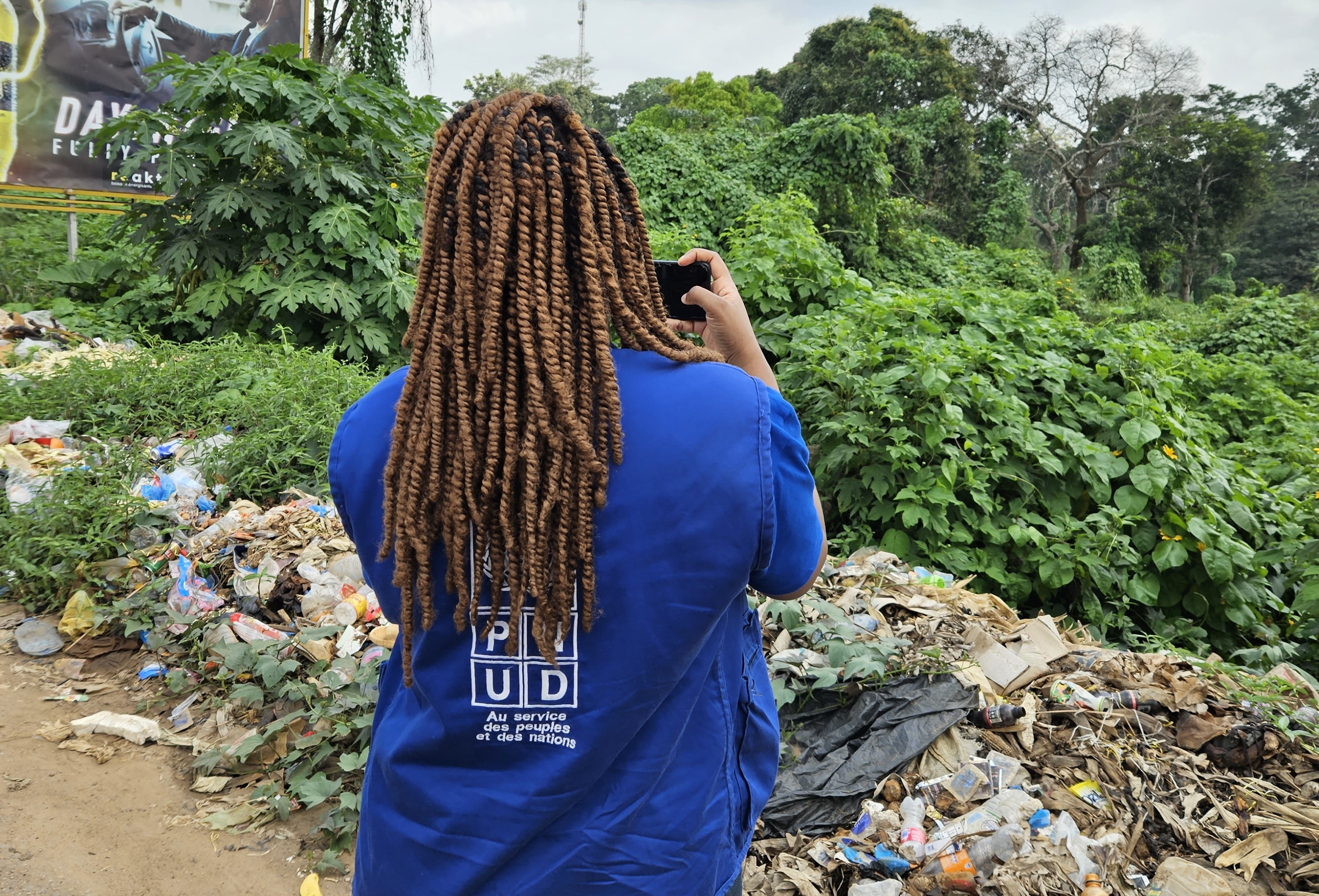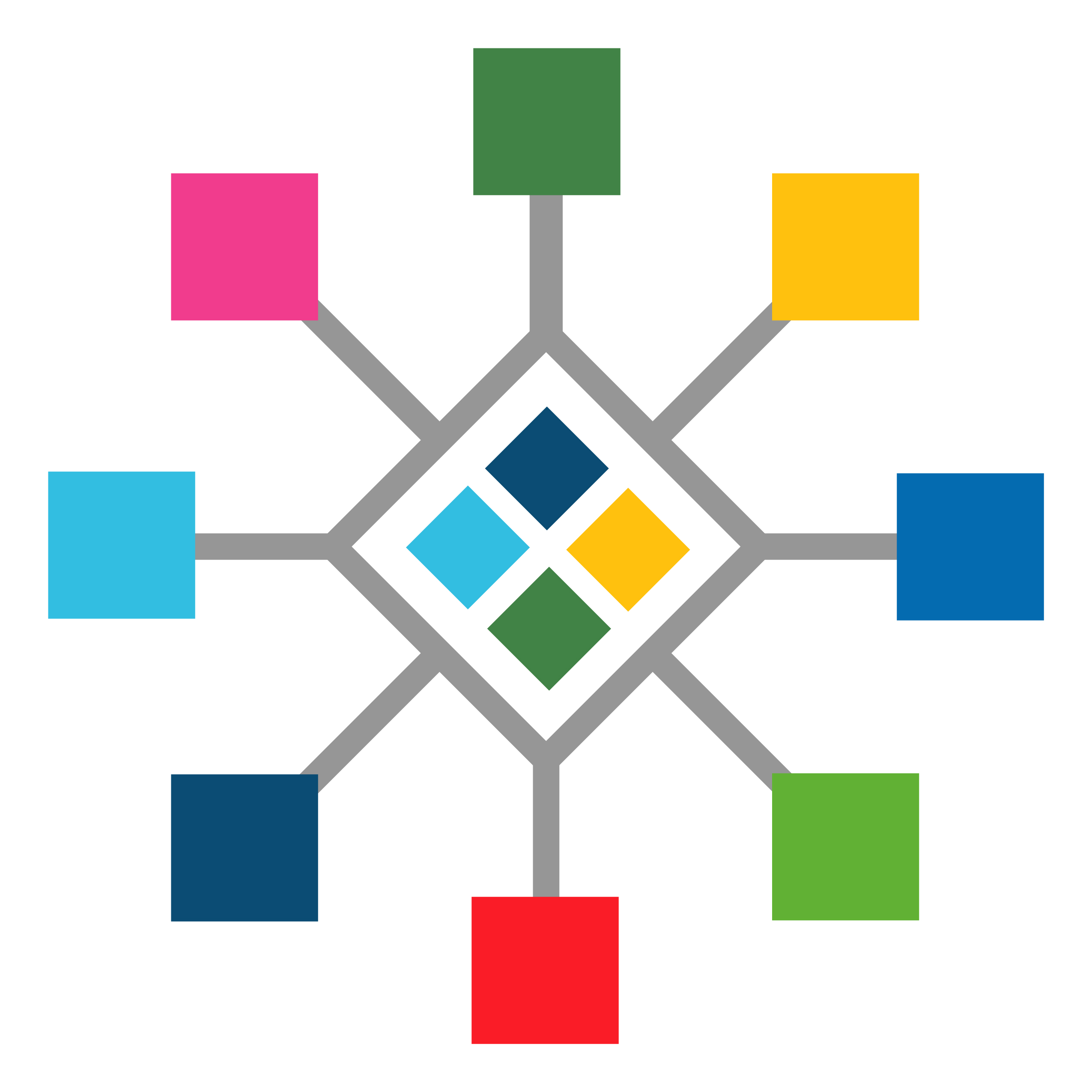''Zero waste'': What practical and affordable solutions for municipalities?
April 9, 2024
In the shadow of the busy streets of our cities, one question remains: "How can waste management be improved in municipalities?" Tackling this issue, the UNDP Accelerator Lab conducted a deep dive into Mbankomo’s municipality. The goal was to pinpoint specific difficulties and suggest tailored, practical, and low-cost resolutions. This blog takes you through the inventive solutions discovered during the study-solutions that could significantly enhance waste management in municipalities globally.

UNDP-CMR-AccLab team at a street waste dump site in Mbankomo-2024
Waste management is a global issue that requires the active engagement of all parties
Waste, in its broadest sense, refers to any remnant or byproduct of various processes such as production or transformation. It can also be any property, whether movable or immovable, abandoned or earmarked for abandonment. Every year, more than 2 billion tonnes of municipal solid waste are generated globally, with a mere 19% being recycled or composted. This waste often becomes a pollutant, negatively impacting people's health, the environment, and the economy.
In Cameroon, about 6 million tonnes of waste are produced annually. This waste comes from households, utilities, businesses, and markets. Of this, only 15% is recovered and/or disposed of (incineration), while most of it ends up in rivers and other waterways. To address this expanding problem, the Cameroonian government has enacted several legislative instruments to regulate waste management at the level of Decentralised Territorial Collectivities (DTCs). These encompass laws and decrees overseeing national environmental policy, local domestic waste management, basic conditions for waste management, and funding methods for waste removal and processing.
Key legislations include Law No. 96/12 of August 5, 1996, providing a framework for environmental management; Law No. 2004/018 of July 22, 2004, detailing rules applicable to municipalities; and Decree No. 2012/2809/PM of September 26, 2012, outlining essential conditions for waste management in Cameroon. Furthermore, Decree No. 2023/04186/PM of July 24, 2023, specifies collection and repayment procedures for special excise duty intended for financing waste treatment.
Although there is a framework of regulations in place, waste management is still a major concern for all municipalities in Cameroon, whether they are rural or urban. This situation arises due to a lack of responsibility among key stakeholders and the absence of supporting measures.
Mbankomo’s growing challenge of waste management.
Located in the Centre region, 25 km southwest of Yaoundé, Mbankomo is a cosmopolitan municipality that is home to over 100,000 people (Spring: Municipality of Mbankomo). Statistics from the municipality indicate an annual production of 3706 tonnes of waste, a figure based on a mere 10% coverage of the total waste generated. This garbage tends to accumulate in unregulated landfills that are dangerously close to residential and agricultural areas. Additionally, illegal dumping on streets is rampant, leading to blocked gutters and drains that, in turn, result in harmful flooding. The resultant environmental and health issues are significant.
To combat this urban chaos and its unfortunate impacts, municipal authorities have initiated various regulatory measures aligned with national strategic guidelines. These include devising a summary plan for waste management as well as a municipal sustainable waste management plan. The municipality's technical and logistical abilities have not been enhanced to complement these measures. At the national level, the resources required to implement these plans are very substantial, so the efforts made are inadequate and dwindling, resulting in the persistence of a high volume of contaminated waste.
In this context, the Decentralisation project, led by the Ministry of Decentralisation and Local Development and the UNDP, has enlisted the help of the Accelerator Lab to explore and map out practical, innovative, and low-cost solutions. The aim is to learn valuable lessons from Mbankomo’s experience and apply them to benefit all municipalities in the country.
What practical, innovative, and low-cost solutions exist for effective waste management in Mbankomo?

UNDP-CMR-An icon illustrating a collective intelligence process-2024
We started this exploration and mapping exercise by immersing ourselves in the community to gain a better understanding of the problem and assess local solutions and opportunities. This immersion allowed us to make three main observations and formulate hypotheses that could lead to significant improvements in waste management:
The first observation was the absence of an integrated waste management strategy that considers all aspects of waste management and involves all the key actors. Actors acknowledged the fact that they were addressing the waste issue in unique ways without strategic coordination. From what we observed, the lack of this strategy is one of the biggest weaknesses of Mbankomo’s waste management plan. Implementing an integrated waste management strategy will set the basis for a global and strong impact.
The second observation was the low engagement of the grassroots communities. They are predominantly producing the waste that is discarded, polluting streets and waterways. Discussions with them showed that they don't understand the impact of their actions and even don't have access to practical tools to help them manage waste responsibly. We believe that educating them and providing them with proper waste management tools can increase their awareness and encourage them to take responsible actions.
The third observation was on the huge quantity of waste abandoned in illegal landfills and dumping and the remarkably low utilisation rate. Statistics say that less than 15% of the generated waste is effectively reused or recovered and is restricted to sporadic domestic initiatives associated with soil fertilization. Considering waste recovery can significantly decrease discarded waste and generate benefits.
The above-mentioned observations and hypotheses from our community immersion highlight the need for a holistic and systemic approach to effective waste management in Mbankomo. Designed solutions should be tailored in the context of the circular economy, integrating an ecosystem of upstream and downstream stakeholders.
The design of solutions was done during a design workshop organized after the community immersion. For 4 days, innovators, community leaders, private companies, and local representatives joined our team to develop practical, innovative, and low-cost solutions for effective waste management in Mbankomo. Sustainable technologies and alternative models were included during the reflections. At the end, we were able to propose an integrated plan with three dimensions: (i) the setting up of an integrated strategy on waste management; (ii) the engagement of grassroots actors (young people, women, and social influencers) for the adoption of healthy and sustainable behaviours; and (iii) the recovery and processing of waste.
The proposed integrated strategy for Mbankomo's waste management will build upon existing plans and leverage a stakeholder platform that will operate as an advisory body. The platform will convene regular meetings to review and oversee the town's waste management plan, while also communicating individual actions to drive collective impact. The advisory body will recommend tools, including strategies and texts, aimed at promoting best practices, discouraging harmful ones, and facilitating resource mobilization. This solution is both practical and cost-effective, requiring minimal funds to implement.
The community capacity-building programme will be implemented in two different phases. The first phase will involve providing appropriate training tools, such as brochures, animated sessions, and mobile applications, through peer-to-peer coaching and digital tools like local radios, social media, and mobile applications, to keep the cost low. Social influencers will also play a significant role in online and digital campaigns, including TikTok challenges. In the second phase, collection and sorting tools will be provided for homes and main storage sites, which will aid communities in applying the skills they have acquired and reduce the amount of abandoned waste, thereby facilitating the recovery process.
The proposed solution for waste recovery and processing involves the establishment of a semi-industrial processing unit that will cater to both organic and plastic waste. The project will be executed in collaboration with startups that are already operating in the relevant sectors. Their responsibility will be to transfer their technology to the community, allowing them to take charge of the project in the long run. Initially, plastic waste will be transformed into construction materials and utensils, while organic waste will be used for producing fertilizers, biogas, and home soaps. As the project progresses, other products may also be introduced or removed as per the requirements. This approach will have a positive impact on the environment by reducing pollution and offering employment opportunities to women and youth. Moreover, it will improve the accessibility of products by utilising the available resources and workforce.
Upon completion of the design exercise, the proposed solutions were found to be both intriguing and cost-effective in comparison to the existing waste management plan. The next steps are therefore to experiment and learn from what works best and can be scaled in other municipalities. If you're interested in learning more, I invite you to closely follow these developments and join us in supporting the creation of a healthier and more sustainable environment for all. Effective waste management contributes significantly to the achievement of Sustainable Development Goals (SDGs) 11; 12; 13; 14, and 15.

UNDP-CMR-An exploration illustration icon-2024

 Locations
Locations